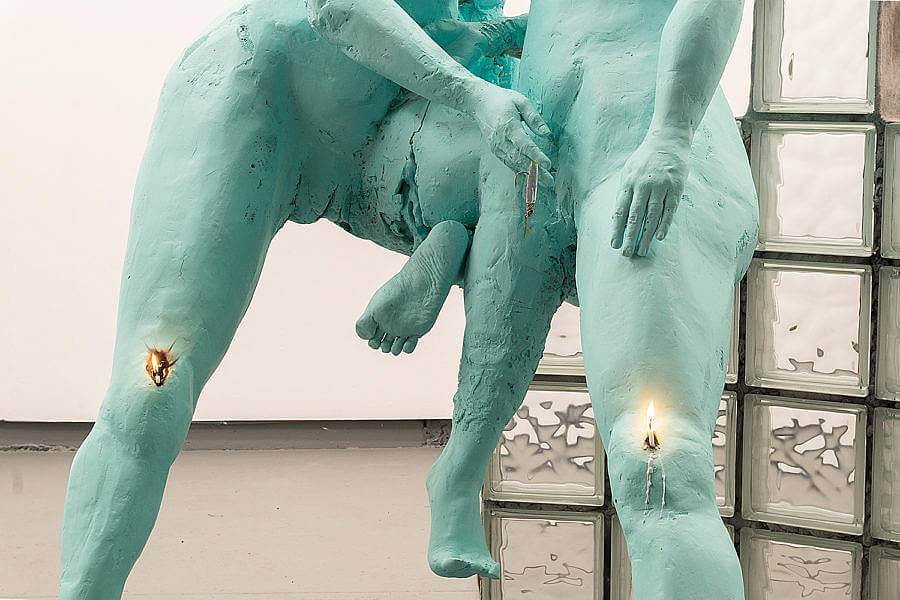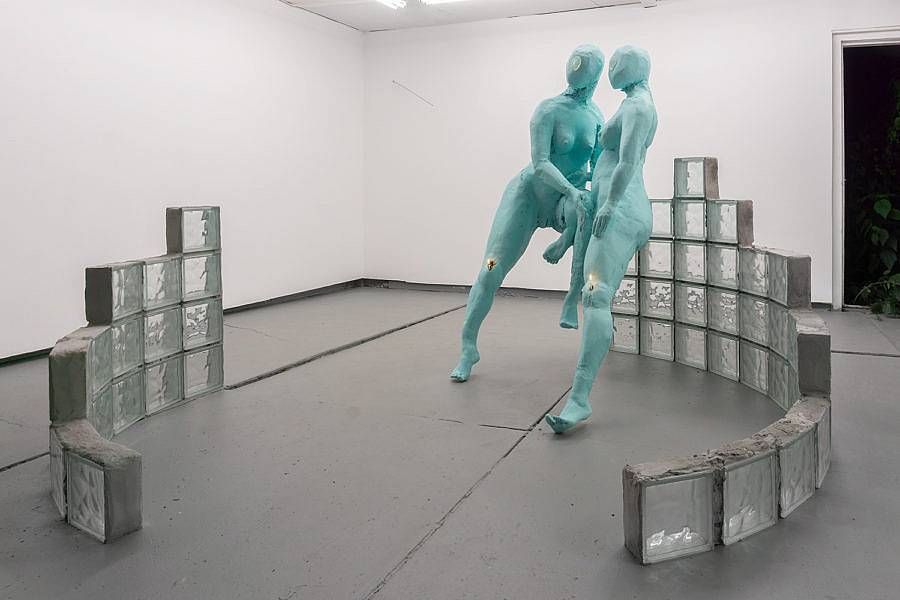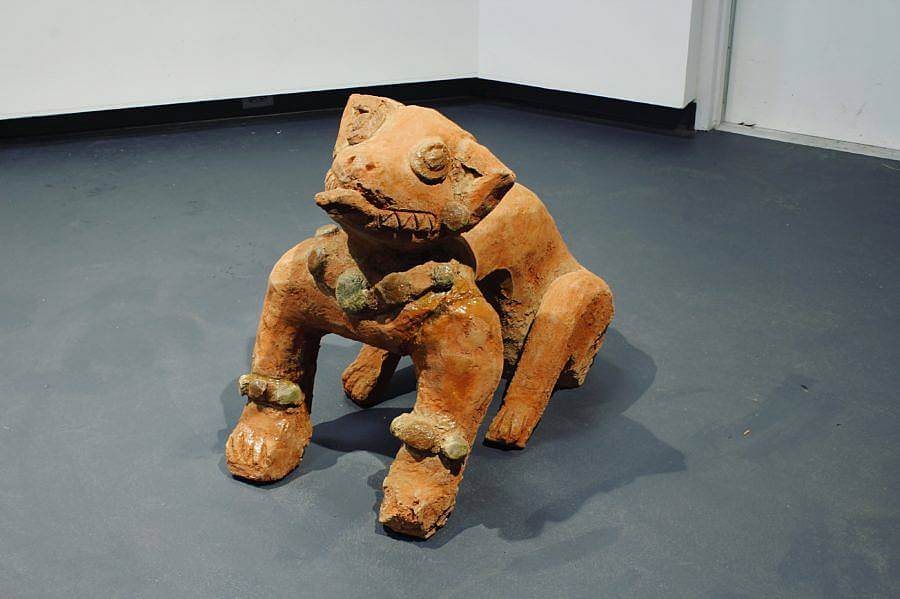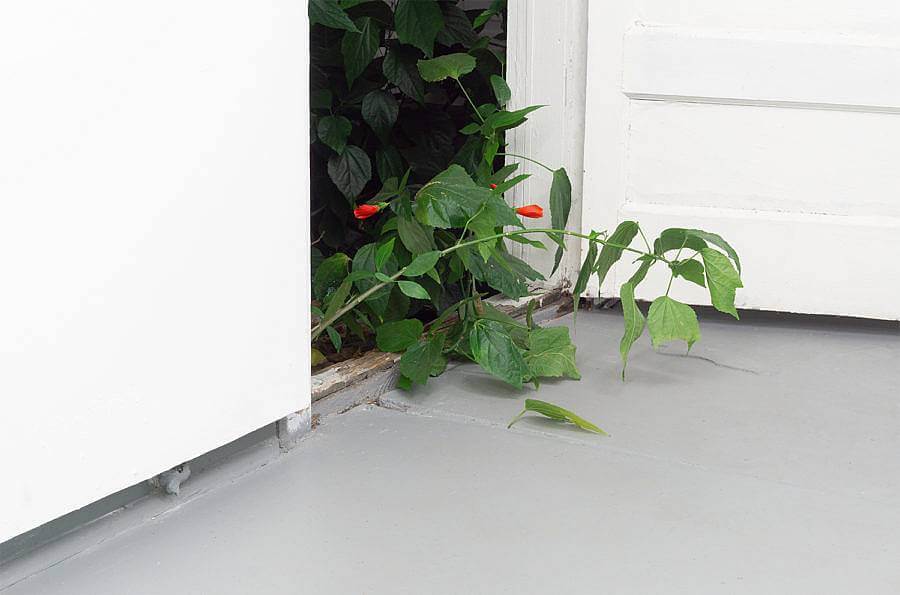Tell us a little bit about yourself and what you do.
Hi! My name is Libbi, I’m Tampa born and raised to a family of immigrant musicians from Ecuador. I have 2 siblings and take care of an airbnb for my aunt. I’m also a barista at whole foods, a life drawing model, Exhibitions Coordinator for Tempus Projects, and an art instructor at the Tampa Museum of Art. In addition to being an artist. Another note for everyone: I’m bad at reading and responding to messages but please know I still love you if I’ve left you on unread. I’m a Leo with a Libra moon, and I sleep in too much.
LVL3 is a partner gallery with the ACRE residency program, what was it like being at ACRE last summer? Did you complete or begin any projects?
ACRE was a true dream! I didn’t get to go to a lot of summer camps as a kid and really wanted to because I would always see them in movies or something but getting to go to art residencies is way better. The people are the best part. I didn’t begin or finish any projects while at ACRE. I just prior had finished an intensive six week residency in Norfolk, Connecticut and felt like I needed just a little break time. I also was aware that one of most important things to come from acre are the relationships with other residents, staff, visiting artists and curators so I wanted to be able to focus on nurturing social bonds. I really miss everyone from the program and hopefully might get to work as staff this upcoming summer! Aaaa fingers crossed!


What have you been working on since then?
Since then, I made my first goccu press print, I wrote an application for a Creative Research Fulbright, and worked on reconstructing a sculpture and developing some new ones for a solo show at Coco Hunday, a gallery down here by Jason Lazarus. Alongside exhibiting some older works in real stellar group exhibitions. Oh and also some secret writing; making some words on 360 degree video, queer theory, and phenomenology. That paper got accepted into the South Eastern Women’s Studies Association, but the conference got cancelled because of covid-19.
What are you looking forward to in 2020?
Well, one of the main things was the Coco Hunday show, and before covid-19, the Fulbright notification— I’m currently a semi-finalist, so waiting on the final decision for that any day now. EDIT: Libbi was awarded the Fulbright! And still waiting to see how covid will impact the Fulbright.
Otherwise, I might also be working on a fountain in the future; I really want to get into public sculpture. Another big thing I was looking forward to was the group show at LVL 3. I’ve also been working with Pita Arreola-Burns and Elliott Burns of Offsite Project in London for something in the future, in addition to a digital video interview about the Coco Hunday show. If Ox-Bow is on for the summer I’ll be able to attend a blacksmithing class with the generosity of the LAVA Scholarship.
I’m also supposed to graduate in May!?! I’m very ready to be done with school for a little bit. We’ll see what happens if I get a full-time job or move or something. Some of my dream jobs include mail carrier, ice cream truck driver, and pizza maker.
I also just hope we are able to reduce the impact of this pandemic. These are scary times and I really do think self isolating can make a difference. And who knows? Maybe, … just maybe, we’ll see the end of capitalism in this.
Can you talk about your conceptual interest in different forms of media and new media? How does this lens help you explore other themes, as you describe, the“ inaccessibility, erasure, and invisibility of Latin-American history?”
Okay! I think I started getting interested in videos and recording devices as I was trying to figure out how to document my performances. Once I learned how to edit videos though, that became a lot of fun. I also thought that while in an institution, I should take advantage of learning and using the technology available to check out; because outside of a university I wouldn’t have access to any of that stuff—it’s too expensive and I’m too poor. :0( Okay!!! So interest in media, and philosophical underpinnings of whyyy. I was realizing I really didn’t know much about Latin American history, or like the basic public k-12 education really did not go into it very much. And when I tried to look into it, maybe specifically information on Ecuador, I could not find much on the internet. Or at least a lot of stuff was like, focused on its biodiversity. But the condensed information delivered in memes through social media shared by internet friends made me more privy to this information. Being internet friends with people I wanted to be like meant I had to google “did the C.I.A. instill right-wing dictators in Latin America?”, when I saw a graphic, meme, or hot take. I saw this subversive spread of information (which is kept secret from public education) shared through internet subcultures as a gateway to hidden histories. This subjugated knowledge escapes through the cracks, maybe in between the pixels of the internet, embedded in the grid it necessitates. And so, because of this I feel an importance in the recording of those populations and people who aren’t normally deemed “significant” enough by popular media. My family easily fits into this category of just normal folk. Conducting my own field recordings on the ground, geographically in the area of interest (be it Plant City or Guayaquil) I felt was important because there isn’t much of this formally happening.
Tell us about your day-to-day relationship with technology.
I wake up, usually from the sun, or my phone’s alarm going off because I need to be somewhere at a certain time. I use the sink to wash my face and brush my teeth with an electric toothbrush. I might take a shower. If I’m out the door I don’t usually eat breakfast. Then often I’ll drive somewhere. I also look at my phone way too much. In the car, I’ll use google maps to find the fastest route or check if there’s any accident. In the car I listen to music, or podcasts, sometimes I will listen to book PDFs I need to read in the car via my laptop and the laptop’s accessibility features. People make fun of me for listening to readings in the classic Fred text to talk voice. It’s super robotic. Walking around anywhere I typically have headphones on because I feel like it’s way more enjoyable to have your own soundtrack to things. Depending on the work I’m doing the laptop might be necessary. Admin work requires a laptop just for drafting writing etc. If it’s a studio day sometimes I barely ever open my laptop, or again just use it to listen to PDFs. In the studio bluetooth headphones are key. When I made more digital work and videos most of studio time was spent on a nice big desktop in the computer lab. I might get one at some point soon but not sure. And then this whole process just reverses in the night time basically. Something to note though is that I don’t really watch TV or netflix or anything. Genuinely, I would love to; I wish I’d seen all of pop culture, but sadly have not. Only just now I started watching Neon Genesis Evangelion.
Can you describe your current studio or workspace?
Okay so for about two and a half months I was working in the garage of Coco Hunday to produce work for February’s show. It’s a nice polished garage and got me thinking that a studio outside of an institution for sculptures might look like a garage. My studio while I’m making a sculpture looks like… a tornado ran through it. Often the floor is covered in a layer of foam scraps from carving the form. I don’t throw away the scraps because while often times I use discarded, used foam from CNC routers or like, furniture packaging, the scraps from the process are useful later for details or I will bunch them together to make new blocks to work from. I try not to produce waste, or use too many “new” products. Now with social distancing and stay at home protocols, I might get back into making some new digital works. I’ve also kind of thought about making some gouache and ink paintings, but I can almost never bring myself to exhibit those. it’s something I’m working on. I think I feel insecure about them. I guess I don’t really have a ‘studio’ right now. But it’ll come soon. As soon as I finish answering all my emails.
What is it like living and working in Tampa?
Tampa is grimey. And I love it. I used to hate it, but that was because I grew up here and really wanted to leave Florida. But in my extended stay, I’ve found the art community I was searching for and becoming involved really provided a connection. I’ve come around to have a nostalgic sense for it even though I haven’t left yet. I find it endearing I think. It’s nice to be in a place you know so well.


How did your alter-ego “bili cepon” come to be? What are they like? How are they different from yourself?
bili! Okay, the name came from a regular at my barista/bartending job. I think at the time there were not that many workers who spoke spanish and we bonded over speaking the same language. It was just as a new hire, he asked me what my name was and I said ‘Libbi!’ and then he was like, “ok! Bili!”; and it just kept going as a running joke. Their last name happened about the same way, but I asked him for a last name. Bili’s transformation from a nickname to a character started early July 2017. At a summer residency at PAFA called ‘Currents’ I made a leotard as a performance uniform for myself, and deemed it some mindless studio work as I did not have a clear final objective for this leotard. Later, production of a video there with the leotard seemed like either a pilot or theme song intro to some sort of semi-digital intergalactic heroine. A projection installation of this video and separate performance were presented as bili’s introduction to the world. Bili is.. Oblivious? Always fails, isn’t able to control their ability to teleport resulting in sporadic relocation, into digital spheres or even folding linear timelines. Uses futile tools with optimistic hope. But a key feature is that they are determined. Bili has a lot of passion and desire towards their goal of working against intergalactic space colonization since it’s what eradicated their own home dimension. They like living on the internet as a temporal retreat, even having built a house at offsiteproject.org back in 2018. Bili is a version of me. An amalgamation of interests and insecurities; and they change and evolve as I do. Bili is also the crux of a very, very loose and long form narrative in which a lot of the sculptures I’ve made this past year and a half or so can theoretically fit in. I try not to push anything in my studio practice, but rather just do and make what feels right. Sort of similar to bili’s inception, of just following intuition.
Your video piece “Fernanda” is told through the perspective of your 9 year old cousin. Do you often work from personal or familial experiences? What advantages or disadvantages does working in this way have?
I do! Most of my work from before June 2019 is heavily rooted in my family—and even after then it still uses that foundation. Sort of in a way showing them that I care. Like, I wish I was better at attending to my (multiple, different) family Whatsapp group chats, but I’m just not like that. I’ll go in and there’s like 400 new messages in 4 different groups that all have like 20 different relatives in it. I get overwhelmed. I also like the freedom and release of control that working with my family, specifically in the case of Fernanda, provides. I just hand them the camera, and they get to decide what is notable of recording or what they want to say. And they like the attention too, they aren’t camera shy at all, they love it. A disadvantage I foresee is maybe a struggle if I move [farther] away from my family? I guess it means I could go visit them more often, though. Oh—one disadvantage I have noticed before: I’ve always wanted to make a piece involving my bisabuela (great-grandmother), seeing as she’s still alive and a great source of oral history. But every time she knows she’s being recorded or something, all she’ll talk about is religion and jesus: stuff I’m not interested in. Even when she’s not being recorded it’s hard to get her to talk about family history; lots of jesus jargon still. My mom and I are trying to get her to write an autobiography. And family members can be a little problematic! Being Latinx/a/o doesn’t negate racism. And to address the former part of the question, even on a personal level, yes, all of my work I think has to stem from here. It’s all got a personal tie or core that may not be readily evident, but is what compelled me to make it exist. I would say an advantage of this is that I am able to work through problems by making work and by being in the studio. Disadvantages of working from personal experiences? I don’t know, maybe that everyone knows my shit lol?
What is your process in regards to language, text, and writing?
I don’t write a lot actually. Writing comes pretty difficult to me actually. I can do it, but I really have to sit down and agonize over it. Most text in my work is either a note scribbled on my iphone or subtitles/ translations. It always sits in the back of my head that the production of english subtitles on works is telling of who my audience is, and that in a way, I have to cater to them. Part of me doesn’t like that, but another part of me thinks that if I didn’t have to translate, I couldn’t make the important aesthetic decisions that have been key features in some of my previous work. Could the work have been simpler without the text? Likely, but the multi-layered quality becomes a result of the interaction of these two regions. This is what forced the construction of a new, or emerging, diasporic “third” perspective. But don’t get me wrong, I’m not defending the involuntary contact that made these situations come about. Like its not to negate the global north’s hegemonic stronghold of imperialist practices on the global south. I’m certainly not defending that. But the idea of the re- construction of a distinct point of view is integral to my interest in 360 video. I guess this rounds back out well in Fernanda. I put subtitles to translate what my cousin was saying. I thought it fitting to also match the aesthetics of the text to the speaker: I thought Fernanda would like the sparkly animated gif text.
What are you reading right now?
What’s Love Got to Do With It? By e-flux journal, just finished Duty Free Art by Hito Steyerl, In the Flow by Boris Groys, A Thousand Plateaus by Deleuze and Guattari, Love as a Hollow: Merleau-Ponty’s Promise of Queer Love by Megan M. Burke
